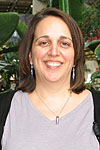One Lab approach to planning
 |
|
Denise Keiner |
Denise Keiner, head of the Budget Office, wrote this column.
As Fermilab embarks on its mission to drive discovery and execute the P5 goals, we must be an excellent steward of federal resources, using the right systems and processes to maximize the science we do with the dollars provided.
To meet this challenge, the lab has been working for more than two years to design a better financial and resource planning process, enabled by a new tool, to replace the complex, manually driven process used today. There is a labwide effort sponsored by the CFO, partnering with the CIO, to design and implement a labwide Budget and Planning System.
As the functional lead for BPS project, I'm involved with a number of working groups made up of division heads, project managers, department heads, finance professionals and IT professionals. These groups are selecting a tool to enable new and improved processes; evaluating how best to budget and track expenditures; and designing a new way to charge labor costs that will make budgeting and analyzing variances easier.
The BPS project is expected to deliver an integrated budget and planning capability that will link strategic planning, resource planning and budget formulation through standardized labwide processes. BPS will serve as the single version of the truth for reporting our financial plans and status and furthering the One Lab vision. It will provide more visibility into labor resource assignments to make the budgeting process more effective and efficient.
BPS will also make it easier to conduct scenario planning, both at the lab level and the organization level, to help us respond quickly to DOE when funding projections change. With a new tool and redesigned business processes, we will increase our ability to analyze and forecast financial results, which can enhance our ability to make better resource allocation decisions as we execute our scientific program.
Currently the project team is evaluating vendor responses to our request for proposal for a new tool. On-site demonstrations of these system solutions are taking place now, and the evaluation team should have a recommendation by the end of May. Once a tool is selected, the team will seek a vendor to help implement the tool, beginning in early fall.
The project team and I are excited to be able to offer new capabilities to all areas of the laboratory and to provide our funding agency with better insights into our financial plans and status of the program of work we are executing. I want to take this opportunity to thank all the individuals who are dedicating their time and talents to the BPS effort. We still have a great deal of work ahead of us, but without engagement throughout the lab we would not be ready to select a tool and start the next phase of the project.
|